Lorenzo Villoresi
A History of Fragrance Creativity
by Tim Girvin
Exploring the renaissance mind of Lorenzo Villoresi: Scholarship, legacy
and the genetics of exploration — a history of fragrance creativity.
Sometimes you find a person that seems like someone you’ve encountered
before. Perhaps in another life, another journey, another time, another culture.
A dream, perchance.
In the writings of Jorges Luis Borges, the autobiographical meanderings of Vladimir Nabokov, the figuring of Gabriel Marquez — there is a character, a kind of protagonist, that has a legendary feeling that waltzes through the character of their phrases.
Mythic, worldly, scholarly, exploring - and always gatherers, people who hold experiences, adventures, other worlds, visions and exposures that lie beyond the pale of perhaps the common way farers in us all.
Reading backwards in my time — the “Labyrinthos” of Borges, the lepidopteran studies, the butterfly wonders of Nabokov, the choleric explications of Marquez — there was always some literary — fictional or not, exposure to the renaissance figure — the polyglot, the polymath.
Spending time with Lorenzo Villoresi, did just that, again. Being with him, took me back to those exposures.
I had the limited connection with Lorenzo earlier in the 21st century, as Pierre Dinand and I’d introduced our new alliance to him. In our opening mailing, Lorenzo was one of many that responded. But in this time, recently in Firenze — my connections with Lorenzo, his team, his wife, would be more direct, inspiring and meaning full.
There’s a lot that’s been written about Lorenzo. Marcello Aspria
(http://www.basenotes.net/) notes that Lorenzo is:
“known all over the world for his prestigious custom-made fragrances.
This self-trained perfumer from Florence studied ancient history,
philosophy, and religion, and traveled extensively through Northern
Africa and the Middle-East before committing himself to the world
of perfumery and fragrant raw materials.”
The real telling — to the story of Lorenzo Villoresi — is the story
itself. And in speaking with his wife, that was part of the compelling
layering of his experience, and his family, extending back in layering
that creates a profoundly detailed and fascinating depth to this man
and his contributions to fragrance.
The love of exploration — and the learnings that come from it,
are genetically aligned. The Villoresi clan are grand explorers,
scholars, lovers of an enriched life, scholastic venturers.
These images, shown to me in his atelier, overlooking the beauty of Firenze of rive gauche, the Arno, come from his family legacy — another explorer. (Lorenzo will have to tell me the name of this family member — since we didn’t have time to explore this further on the advent of another meeting at his studio with architects).
Some of the artifacts from this family member — the telescope, a gramophone and sound exploration journals and mapping documents:
But what is interesting is the concept of scent, the raw materials of fragrance making, the scholarship of exploration, and the living of that life - the admixture of all of these elements — and the legacy of Lorenzo and the finely tuned and curiosity-enlivened minds of his family members.
His father taught him the value of an understanding of nature and the outdoors, examining the beauty and therapeutic character of various plant species in the gardens of their Florentine palazzo, or the country estates of the family villa on the outskirts of Firenze — as well as the alignments of art, literature and scholarship.
His mother, Clarissa, another adept, kick-started the harkening to Arab
and Persian heart of the fragrance world, the legacy of time in creating
scents as a art for thousands of years, as noted here, as she: “opened a small boutique in Cairo after World War II, where she sold artisanal products from Florence. During his adolescence, Lorenzo was intrigued by his mother’s recollections of Egypt, a fascination that was to become a crucial element in his life. As he prepared
his academic thesis on the role of death in ancient Judaic and Hellenic traditions, he started a cosmopolitan life which would constantly draw him back to Northern Africa and the Middle East. He followed the traces of Hebrew, Egyptian and Mesopotamic cultures by making long, distant travels, often without any specific
goal. Moving from the big bazaars in the Egyptian capital to the market places of Jerusalem, travelling through desolate places in the Sinaï mountains, Lorenzo discovered a world historically linked to his own culture, but with a very distinct outlook on life. It was in the Middle East, the cradle of the culture of fragrances, that his love for essences and perfumes was shaped - and it was here that hisdesire to reinstall the old, faded tradition of Florentine perfumery was nurtured”. (Marcello Aspria July 15, 2004)
Lorenzo continued that exploration — and you can see the eclectic character of his studies in the returning draw of the Middle East, as well as the walls of his studio, populated with objects-of-art from Asia, tughra from Istanbul, carpets from North Africa, and related collectionsof portable scent leather valets.
He subsequently dug deeper, exploring old books on distillation and ancient techniques of fragrance gathering. More family connections ensued in the connections with inventor Vittorio Orioli as well as the industrialist Ludovico Martelli (whose father was also an explore of perfume making), further helping him find the proper equipment and materials. Vittorio also introduced him to Dr. Sandro Meucci, who taught him valuable lessons in chemistry, which is, of course, at the very heart of perfumery.
I can’t comment at length on the fabulous techniques of Lorenzo’s magic making. It’s all mystery and wonder — it’s all about his visioning allegories in the dreams of making. And much of Lorenzo’s work is about that — exploring the depth of his scholarship and wandering experience as a dervish of scent — and creating a series
of mythic interpretations. What I gather, in listening to him, speaking with him, is the idea of the deep, nearly archetypal kind of characterization of storytelling, that he weaves into the skeleton of a palace of memory.
In examining the delicacy of his labels, his designed bottles — crystal-formed — there is a scholarly disposition to these branded designs. I would imagine that I would find a kind of perfected geometry — his labels are a classical octogonal cartouches, the typographic treatment — a delicately aligned and letterspaced Optima, as designed by my friend, master typographer Hermann Zapf. The labels mirror the bottle forms, in an exquisite alliance.
Usually, for me, I find myself thinking, knowing the brand, knowing the man behind the story, what changes would I change, what alteration, what enhancement might I offer? I’d design a custom font for Villoresi — a Villoresi roman — nothing commonly available, some perfected geometrically fulfilled treatment of a Roman.
And what else? I must reach for a bottle of his Vetiver. In wandering all over Firenze, one profumeria or another, there are no bottles left anywhere. I’ll keep looking, or hope for one, from the left bank of Villoresi, Firenze. Lorenzo?
About Tim Girvin
Tim Girvin is the Principal of Girvin, Inc., a NYC, Seattle and Tokyo brand strategy and design
consulting firm, with extensive experience in beauty, health care and cosmetic product brand
development. He and his team have worked for Shiseido, Estee Lauder, Procter & Gamble
and dozens of other beauty-focused clients internationally in brand, identity, packaging and
storytelling for various markets around the globe. Besides that, he's a lover of fragrance --
and personally savors and collects scents in the rougher space of vetivers, musk, incense
and sandalwood.
Tim Girvin, Principal, GIRVIN | Design
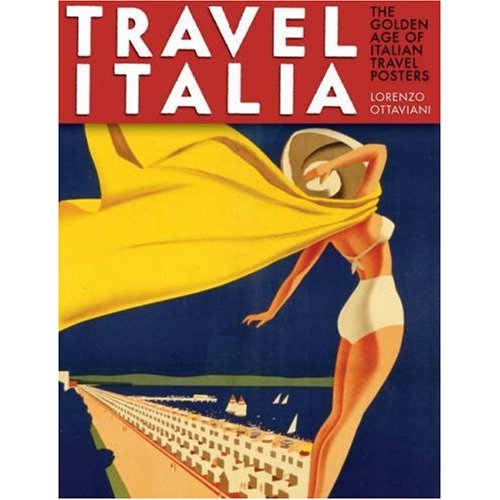
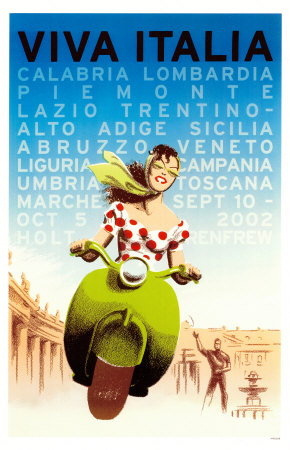
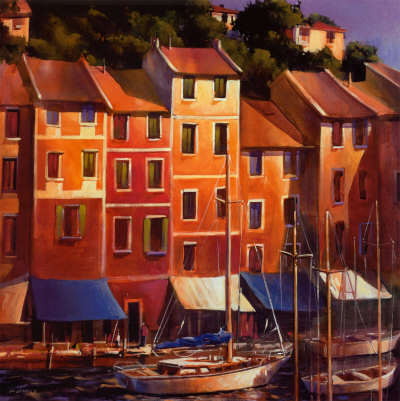
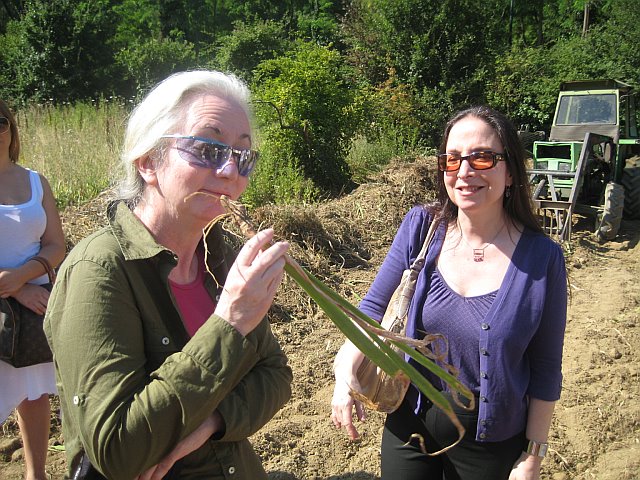
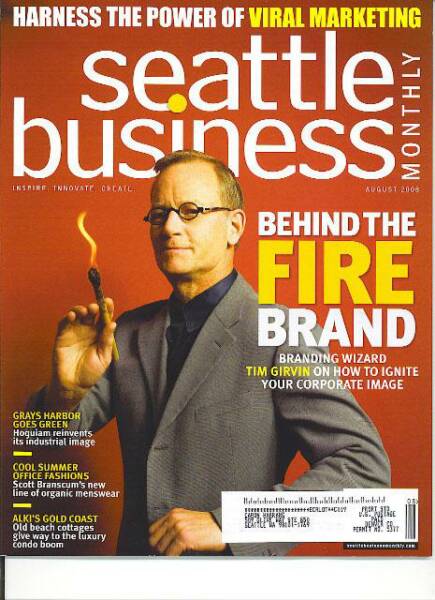
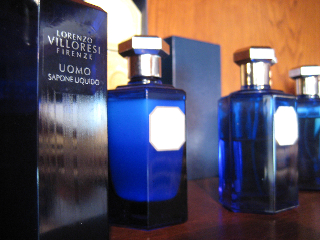
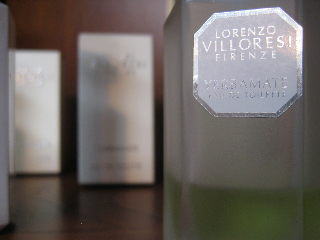
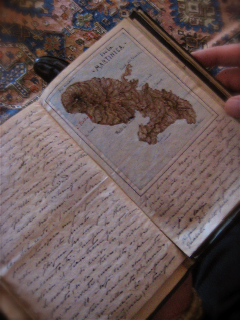
Carthusia Profumi di Capri: A Monastic Tradition
Brandstory in Healing, Beauty & Scent
By Tim Girvin
I’m looking at time, and the heart of things — brands and story,
discovery and myth, truth and relationships.
There are brands that are fresh — closely originated in recent time —
a story that speaks to an origination in the last century, or less,
even mere decades. Or years. Or yesterday. And then there are
others that reach back further in time.
Both the Carthusia label of fragrance and body care, as well as
Dominican expression of Santa Maria Novella that have origins that
reach back centuries — in story — and the evocation of brand becomes
a deeper, even mystical, origin.
Not every product can have this kind of legacy, but what remains in the mind of the challenge is
the scenario in which these more ancient and beautifully compelling brandstories are, in fact,
faltering and dissipating — ultimately, dying out and disappearing. I’m curious about
why brands like this die. And I’ve talked about this a great deal — with brand-makers &
brand-leadership — who are, in fact, facing some of these very issues.
Why does any business fail? Relevance? Matching product alignments to reflection
in community. And that is more about the management of legacy and experience
than anything else. What’s been expressed to me is the maintenance of techniques
that are age-old forms of manufacture, handed down from generation to generation.
One generation to another — a generation, a making, a creation.
What’s that mean?
Note, a signature scent designed for Capri’s queen, circa 1380.
Usually there’s a crossover — from the standpoint of the founding legacy —
for example, in this instance the herbological practices of a group of monks on Capri —
which then transitioned private ownership. It’s clear that the hint of resonance is a reach
to the past and the kind of conscious application of making products that gather the
intelligence of the past, to make things that are even more special, more valuable,
more memorable in the future.
Pachomius the Great, founder of the Monastic tradition.
Here is something more to that crossover connection — where the heart of the
product lies deep in the transitions of time that are truly far, even remote, in their founding.
Bruno, the chief mendicant and founder of the Carthusian cenobitic order, the monastic
and contemplative — and self sustaining — tradition. Bruno proffers in a note to a colleague:
“I stand as a beggar before the mercy of God, praying that he will heal all the infirmities
of my soul and fulfill all my desires with his bounty.
I am living in the wilderness of Calabria far removed from habitation. There are some brethren with me, some of whom are very well educated and they are keeping assiduous watch for their Lord, so as to open to him at once when he knocks. I could never even begin to tell you how charming and pleasant it is. The temperatures are mild, the air is healthful; a broad plain, delightful to behold, stretches between the mountains along their
entire length, bursting with fragrant meadows and flowery fields. One could hardly describe the impression made by the gently rolling hills on all sides, with their cool and shady glens tucked away, and such an abundance of refreshing springs, brooks and streams. Besides all this, there are verdant gardens and all sorts of fruit-bearing trees.”
In the architecture of silences, Pachomius explored a deeply spiritual life, even to the degree of openly discounting formal roles he’s been offered, in
communicating with students, pilgrims and clergy. He’s taken a path that creates ultimately a kind of crossover from one life, to another — one path
of abstinence and meditation, to another - healing.
And therein lies the legacy of what is Carthusia, today.
Interestingly enough, this legacy is a challenge to market. And therefore, it’s not really presented as part of the brand context.
I met with Rita Donadei, the sales representative for Intertrade
Europe, to hear her take, and she offered the tellings of a brand
that is trying to find itself in the mass plethora of fragrances
that are gathering presence in the market. She is alive with passion.
Niche fragrances are hard to sell — since the market is already
overloaded with complex phrasings of marketing strategy and promotional gimmicks.
But what I’d offer here, is the truth. That Capri is a presently wonderful
place for tourism, but it’s more — there’s deep legacy there, a mystery,
a healing heritage, that reaches back far in time and passes, time and time
again into the present era.
And why not hold to the deeper story — retain the wonder of the farther past,
allow that distillation to emerge in the present — by the magic of scent and all
the recalling that can happen, with the right notes — to marketing, to message,
to visualized packaging and to profumo di vita?
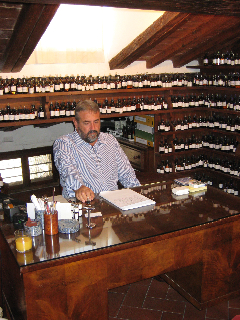
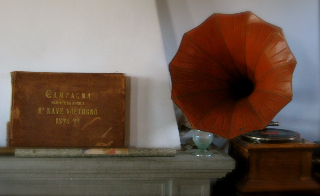
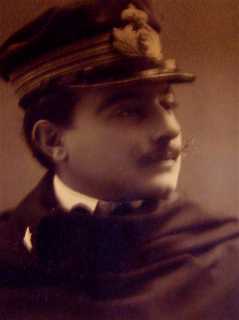
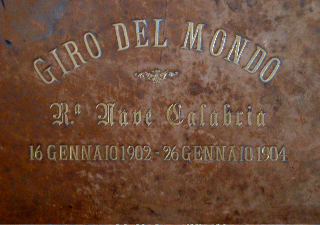
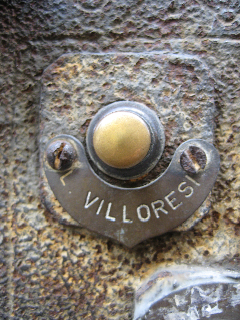
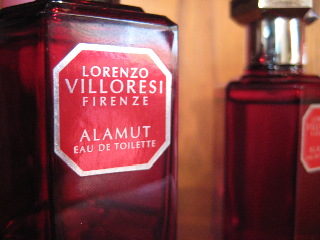
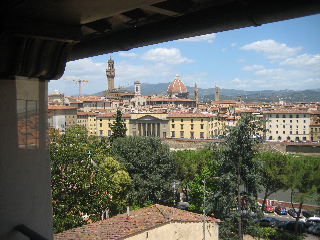
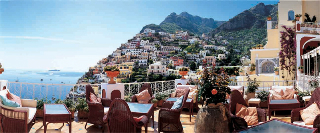
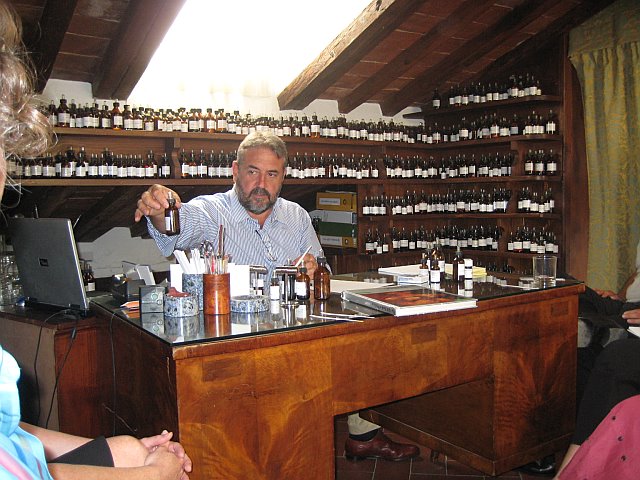
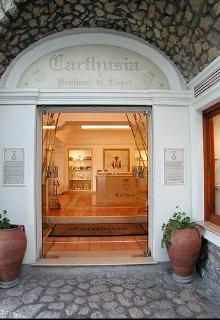
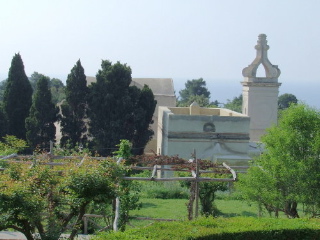
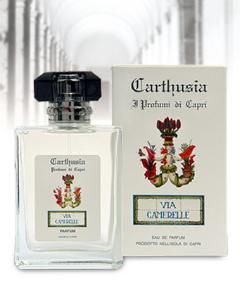
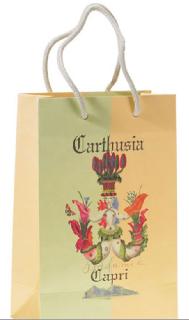
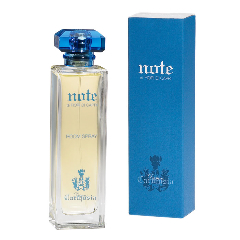

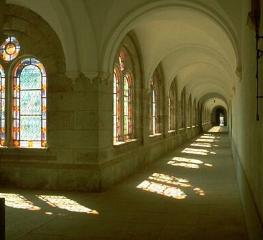
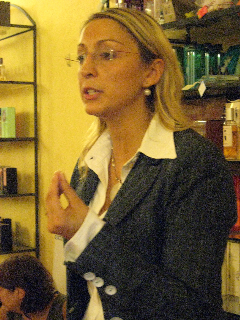
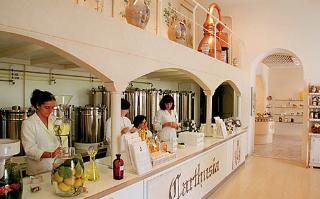
Florence Sniffapalooza
by Dora Truong
My ultimate impression of Florence is a labyrinth that wraps itself around
an ephemeral heart. Every turn is fraught with possibilities and every
cobblestone has been trod by millions of feet. I however, had a focus
which made the impenetrable slightly more conceivable. My trip was
to smell more and learn more about what I was smelling. And thanks
to Karen Adams and Karen Dubin the Sniffapalooza group hit the ground running.
The first day we were off to Parma to visit Morris Profumi Distributors.
This would not have been possible without Sniffa friend extraordinare.
Joe Garces, who has a working relationship with the company. In the
morning we met Laura Tonatto who talked to us about perfume and helped
us create our own individual fragrance using her raw ingredients. We were
handed a list with various notes and from these we chose several and all
went to work. A tour of the production facility rounded out our day. There
was also a lunch at a beautiful restaurant called Euridice that fed us among
other temptations the most delicious Parma ham (what else?) and perfect
risotto. The whole day was a beautiful treat that included a full bottle of
Solista and a bottle of Shanghai room fragrance from Ms. Tonatto.
With a start like Monday could the week get better?
Actually, yes, because the next day we started with a visit to the
atelier of Lorenzo Villoresi. The walk up several flights (Did anyone try that
little elevator?) was rewarded with an expansive view over the Arno past
the Duomo to the hills beyond. He told us about his background as a
young man traveling the world and importing spices from Africa and Arabia.
He told us about the creation of Alamut and took us into his office full of tiny
bottles full of fragrant notes. We met his lovely wife whose sparkling blue eyes
and blond curls begged to be painted by a master.
The afternoon was free to browse the multitude of shops or visi
the attractions, but not for long. At 5pm we received a visit from Dr.
Silvio Levi who is president of Cale Profumi. He told us all about a line
of scents called Panteleria. This is the name of an island equidistant
between Sicily and Tunisia. No wonder those Saracens spent so much
time harassing Italy-they were close. Anyway, after letting us try
them all he actually gave each of us a full bottle of our chosen favorite.
I picked Tanit for its note of passionfruit.
Wednesday we were off to Palazzo Ferragamo which seemed more
like a museum and appeared to be almost a city block in size, except
I don't think Florence has actual blocks, facets maybe. The interior was
exquisite as were the trays of pastries awaiting us. They, too, gave us
a full bottle of a new fragrance called Tuscan Soul. That was waiting
for us in our hotel room the day we arrived. We visited the shoe
museum where decades of styles were on display. Many famous
movie stars wore his shoes; Marilyn Monroe and Ava Gardner
among them. A team from Eau D'Italie visited us at Palazzo Vecchio,
our hotel; and told us about the scents they created.
Among these was an unusual Rose that had a little kick to it
and a fragrance referencing Sienna in a most unusual way.
This may seem like a lot, but if you know Team Karen, our day was just
getting started. We still had a trip to Santa Maria Novella waiting for us.
Not just the store, but the production facility was open to us. Now,
I used to wonder if those very expensive prices were really justified-not
anymore. After seeing those spotless and orderly rooms where people
seemed to actually enjoy what they were doing and where they were
I will simply have to save my money and buy their products. They told us
to take a bag when we entered and by the end of the tour I was
supporting the bottom for fear all the goodies would break it. To say the
company was generous would be an absurd understatement. We were
treated like Santa's favorite children in a fairy tale Christmas.
By Thursday even the most hard core scentaholic might have been a bit
overwhelmed so what better time to leave Florence yet again for Chianti
and a visit to the Pruneti Iris farm. We met the patriarch and his two
handsome sons who demonstrated the harvesting of iris bulbs.
Then we gathered under a blooming wisteria arbor where the bulbs
were cleaned up a bit. This would have been work for the very
old and very young we were told. Then lunch which included an olive
oil tasting as that is another product of this farm that is working hard
to sustain its fourth generation. The grand finale after the good food and
flowing wine was chocolate flavored with iris.
Friday was a visit to Erboristeria Palazzo Vecchio
to meet Alessandro Morsiani who created the line
Profumi di Firenze. His shop was packed with
so many interesting fragrances and products. He
also gave us a lovely yogurt body lotion that leaves
a nice smooth finish on the skin. The afternoon found
us at yet another perfume shop called Elisir that had
a range of fragrances any store would envy. I came
away with Fiori di Capri which I love in liquid and
found the solid equally enchanting. We had a
presentation there to introduce
us to the whole line of Carthusia.
The gentleman representing them wants us to come to Capri.
Our last full day ended with dinner in an outdoor cafe call Zaa Zaa and a fun
time was had by all except perhaps the wait staff who were quite patient
considering they had a party of about 25 people to please. As the meal
progressed we were visited by Alessandro Gaulitieri who charmed us
and smelled great. He is the nose behind Nasomatto.
That is my thumbnail sketch which only scratches the surface of our
Florence extravaganza.
If I ever come into a fortune I will return, but for now I have a wealth of memories,
a suitcase full of gifts and boundless gratitude to Team Karen who made a
wonderful week possible.
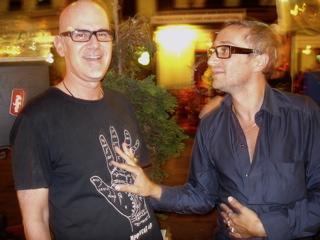
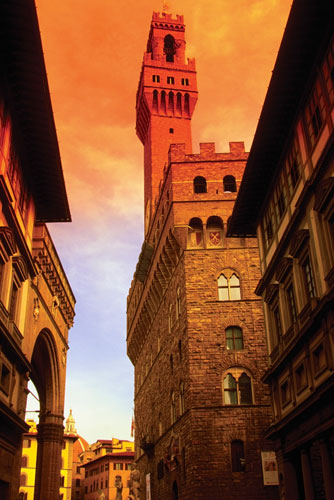
James Dotson and perfumer Alessandro Gaulitier sharing a laugh
Eau d’ Italie- The Scent Of Blood
By Tim Girvin
Exploring scent with Hoteliers and Perfumers
Sebastián Alvarez Murena and Marina Sersale
Foto by Dawn Clark, AIA
Imagine the idea of creating a scent that captures the spirit of your hotel. Or of your life.
Your hotel: decades old - lying, heated in the brilliant coastal sun, facing the azure sea, just off the winds of Napoli.
And envision that, rather than the typically superficial waft of conventional hotel fragrances (quick and barely intelligent to the sensing sniff), your scents are deep wellsprings of skilled imaginings, coupled with the advising counsel of one of the great perfume alchemists, …Bertrand Duchaufour.
It starts here:
The propositions begin with Marina’s family - Sersale, actually a family hotel, (www.historytraveller.com/) long running, since the 50s,
that was founded on the Old Palazzo of the Marchese Sersale — country home in Positano, escaping the bombings in Naples, during World War II. (www.fragrantica.com/).
Of course, I can’t write about everything, all of the details — that were referenced in our lovely chat — but I can write about what I recall, and what resonates.
Like these framings:
Eau d’Italie: this is the first fragrance that was created in celebration of launching the idea of scent — a fragrance — for the hotel (above). “What we thought was to gather the scent of experience at the hotel — the heating of the terracotta, a scent of pottery warmed by the sun” and their nose was Duchaufour, formerly from Symrise, utilizing new molecules - creating the top notes in sequence, followed to the base notes in concordance — cedar, patchouli, musk and a grouping of other scented expressions that build that create a remarkable splay, a memory.
Some other comments from this couple, inventive and deeply committed to the depth of scent experience:
MS: “We had to create something that would be inspired by the place, it’s not about duplicating the hotel, the styling of it — but it’s a new statement; it’s something different; about experiences that are there — differentiating and unique — a strategy that was intentionally so considered.”
SAM: “I like what I smell, I like what I make — but I don’t know how to compare them to anything else — I’m not an expert on vintage experiences — I simply know what I know, and love”.
MS: “There is a lot of freedom, in the making of the new scents for this group for Bertrand Duchaufour— he’s still working for L’Artisan, as a nose, but he is too building amazingly rich explorations — or excavations — into sensual space.”
MS: “Please, never on paper — savor our scents on your skin; they are designed for the skin, not papered stock — they live on, evolve on the skin.”
SAM: “How we savor the notes — and their revealing — is about the realm of the summer mist — that level of saturation, that carries the scent across the wind.”
SAM | MS: “The incense fragrances that we’ve used — not in this opening fragrance, are about gathering. And Marina found this “ball” of pitchy incense from the region of the deep earthen carved churches of Ethiopia. “Pitch based incense there is sold by children, on the road that is near these churches, burning, as well, incessantly in coffee houses in the neighborhood.”
SAM: “Like an oil painting, once the strokes are laid down, they are just that — finished, you can see them irrevocably.”
I ask them: what of the packaging? And how does that relate to the hotel?
I loosely paraphrase, the passionate phrasing of both of the creators:
Gae Aulenti (www.gaeaulenti.it/ ) — a designer, an architect — working on the opening of the hotel, revising the interiors — but reflecting some slightly modernist slant. Nothing baroque, a fresher slant to our truth. We considered a similar slice, in our packaging imagery — moving away from the baroque, to something that moved to a more clean, modernist shelf space — cleanly and more modernist. Our packaging, our imagery, is about this simple honesty — clear, clean, direct.
As a designer, my take — I’d only push for this — that if it is truly a luxury, then how about customizing that sense of typographic application in a manner that attends to the same details of development that they are showing in the months of deep visioning. I get the discipline that they portray, but not the craft that is necessary in the power of their messaging — the package, itself.
Sebastián, the co-founder of the celebration of their scents - is effusively enthusiastic. Both of them are — they love what they are exploring. And given the profound density, it’s nearly measureless, scenting into the wellspring of their imaginations — in fragrance.
Fresh blood — as a scented note? Sienna in Winter, a Men’s Grooming award winner for 2008, imports the “metallic salt of blood, on frozen iron”.
The sequencing:
Egyptian violet — like a tongue-in-cheek cologne from the 30s.
Geranium
Fern
A blood accord
Iris
Ori
Mimosa
White truffle accord
Black olive
Paraguayan
Egyptian Papyrus
Virginian Cedar
Benzoin –
I’m sure there’s more.
What, to men, to women? There are new sexuality and fragrance — sensitivity / skin rules for brands — and what this will mean is that you’ve got to shift the scenting structure on the presumption that men will shave — therefore, how to balance the scent, the components, to the right measure?
Impossible, I’d proffer. Still, these two are on an adventure. And to have shared that moment, like the scent, it’s something never to be forgotten.

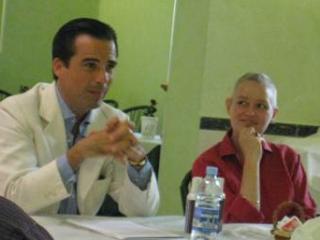
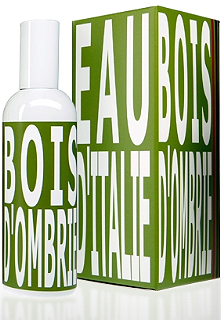
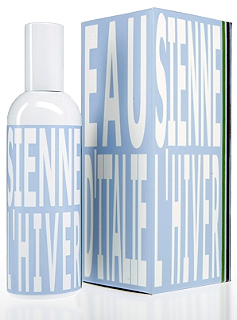
All rights reserved 2006-2009. All content belongs to Sniffapalooza Magazine.
All articles by individual writers and contributors, understand and agree that each article that is accepted by the Editor for publication; becomes the property of Sniffapalooza Magazine for the sole purpose of publication for Sniffapalooza Magazine. Articles may be archived for permanent use on the web site for Sniffapalooza Magazine and for future issues. All articles remain the property of Sniffapalooza Magazine for display purposes only.
